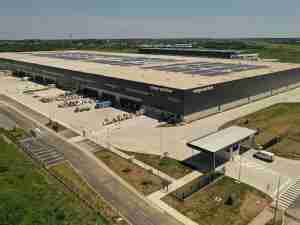The study includes three countries that are part of NAFTA (US, Canada and Mexico), 25 European Union countries, six largest economies in ASEAN along with Japan, South Korea, India, China and Hong Kong in Asia.' The report examines the bilateral trade flows between each country and those outside its immediate trade bloc or region, which resulted in 383 bilateral trade relationships.
'As a trade facilitator, it is pertinent that we regularly encourage research on macroeconomic trends so as help our customers and ourselves to position our businesses to'maximize future trends. The study reveals the slowing Asian growth story and the need to rebalance their economies. The challenge that Asian trade faces today is to hasten the migration to high value goods and focus on managing their growing dependence on oil,' said Frank Appel, CEO Deutsche Post World Net, parent company of DHL.' The impact of rising oil prices will add risks and negatively impact'Asian'international trade. The study also reveals that for 2009 and beyond, international trade will depend more on rising Asian incomes,'than the West.'
Key findings of the study, based on a five-year forecast include: Link between income and trade is stronger between Asia and the West than between North America and Europe
According to the Economist Intelligence Unit study, the link between income and trade is stronger between Asia and the West than between North America and Europe.' A 1% increase in combined income between an Asian country and a Western country will deliver 1.36% increase in trade.
Trade between ASEAN and the West will rise 1.35% for every one percent increase in combined income, compared to trading relationship between two Western countries - a one percent increase in combined income delivers a 1.14% increase in trade.
Oil prices and trade - Greatest effect on Southeast Asia
Another key finding shows that based on an average of all the 383 bilateral trade relationships in the study, a 1% increase in oil price leads to a 0.24% reduction in trade, with the assumption that all other drivers, such as income levels in two countries, remain constant.
Meanwhile, high oil prices have the greatest effect on Southeast Asia, where trade decreases the most.' The impact on oil prices is much greater when an ASEAN country trades with a nation in the EU or NAFTA - a one percent increase in the price of oil reduces the value of trade by 0.3%.' Assuming no rise in income levels, the value of trade between ASEAN and the West would fall by 30% over five years if oil prices doubled, as in 2008.
Asia has a higher proportion of trade centered on low-valued goods
The study explains that the larger impact of high oil prices on Asia, ASEAN in particular, is due to the types of goods being traded.' In West to West trade there is a higher proportion of 'high-value' goods such as computers, aircraft and media devices, and a smaller share of 'low-value' goods such as coal and gas, coconuts, palm oils and textiles and shoes.' In contrast, Asia nations are likely to have a much higher proportion of trade centered on low-value goods.
Since transport costs make up a larger share of the final cost of low-value goods than they do for high-value goods, rising oil prices have a larger impact on trade growth for Asia.
"Much of Asia has grown up on the back of vibrant trade with the West. But with the economies of North America and Europe forecast to perform poorly in 2009, the impact on Asia's t








